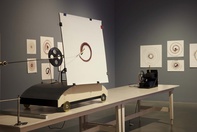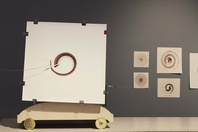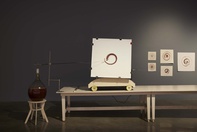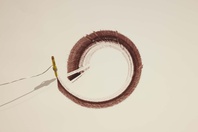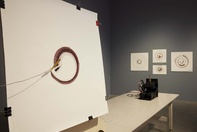Cameron Robbins
Dja Dja Wurrung Country, Castlemaine, Victoria
2021
Displayed 2021 at Museum of Contemporary Art Australia
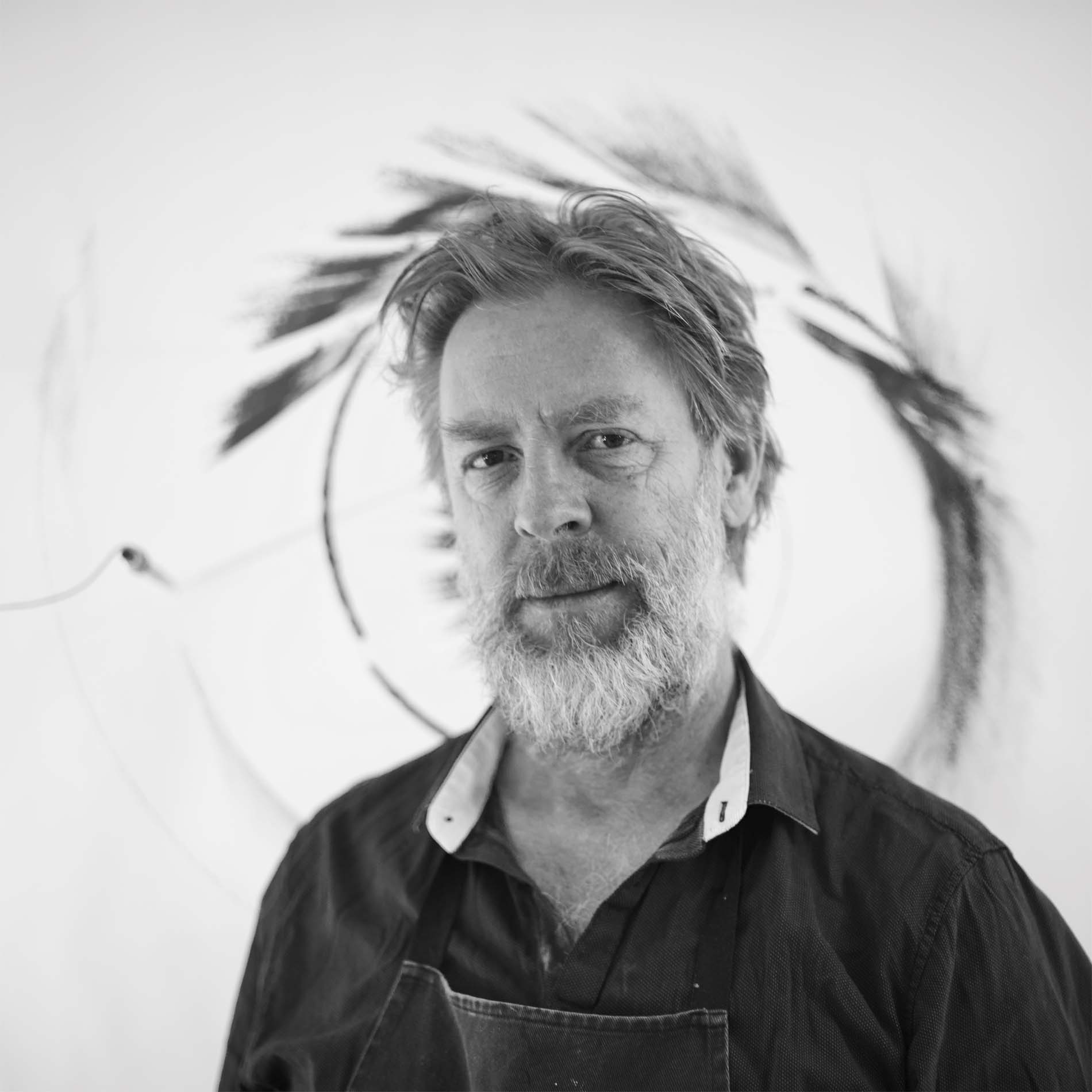
Cameron Robbins
Born 1963, Wurundjeri/Boon Wurrung Country, Narrm (Melbourne). Lives and works on Dja Dja Wurrung Country, Castlemaine, Victoria
Cameron Robbins’ mechanical sculptures make tangible the unseen rhythmic forces of different locations. His studio and site-specific investigations harness natural energy to produce drawings, photographs and sound compositions. Robbins has undertaken significant national and international commissions in art centres, disused buildings and outdoor sites including the forthcoming 2021 Loti Smorgon Sculpture Terrace Commission at the Museum of Contemporary Art Australia, Sydney. His major 50-year wind drawing project, Wind Section Instrumental, is installed permanently at the Museum of Old and New Art (MONA) in Hobart, where he held a major solo presentation, Field Lines, in 2016.
Photograph: Brodie Ellis
Image courtesy the artist, Melbourne Art Rooms (MARS) and Stockroom Gallery, Melbourne © the artist
Artist text
by Rachel Kent
Cameron Robbins’ finely tuned drawing instruments reveal the infinite complexity and beauty of the natural world. Powered by available energies such as wind and water flow, solar and geomagnetic energy, they produce visual artefacts that embrace art and science, in conversation.
Trained as a sculptor, Robbins brings the languages of mathematics, physics and engineering to his work, which he has refined over three decades. Recording and documenting natural phenomena, his kinetic instruments produce drawings in graphite and ink on paper; and more recently, on hard surfaces including marble. Situated between abstraction and representation, their energetic sweeps and curves are at once meteorological records, energy diagrams, and documentation of a specific time and place.
Wind Anolog (2021) is a major new commission for the Museum of Contemporary Art Australia’s Sculpture Terrace. A tripod structure in marine-grade steel, surmounted by twin weathervanes, it responds to the harbour position and powerful wind conditions of the terrace. A graphite stick, attached to a mechanical drawing arm, traces wind patterns onto an oval marble surface modelled on the egg of the sea tern. Its silvery arcs vary according to the speed and direction of the wind; and the design of the arm, which diverts energy through small kinks and a double swivel, creates an element of unpredictability. Expanding and contracting, the patterns accumulate over time, wear away with rain, then build up once more.
Describing his practice as ‘time-based drawing’ that grows by the day, week and month, Robbins observes:
It’s very hard to watch a rock eroding but when we go to a beach, we see the effects of erosion. We’re instantly tapped into a time-based process. I’m trying to visualise that but also make a work that is grounded in the history of the art museum, using materials like marble, bronze, stainless steel – but it is also very delicate. We’re listening to the landscape through it.
Moving from the outdoors in, Robbins’ Oenograf (2021) in the MCA galleries features a kinetic drawing instrument that is powered by another element of the carbon cycle – the fermentation of grapes. Carbon dioxide gas bubbles from the fermentation process power the instrument, which produces drawings during the opening weeks of the exhibition. As Robbins notes: ‘Wine making is a seasonal activity, and the time of juicing and fermentation is called the vintage. The Oenograf will be able to create drawings during the vintage. Eventually, there will be no more fresh grape juice to ferment and wine making will be stopping for the year.’ A reflection of natural processes and time cycles, the work also points to rising temperatures around the world, over decades, as the grapes ripen faster and the vintage shortens.
Environmental temperature shifts impact the drawings themselves, which take shape over 24 hours a day for up to 9 days, on a rotating paper support that produces a spiral pattern. Tight, dense rings accumulate in cooler conditions; wider, looser arcs appear as the temperature warms. Two motors control the speed of the paper rotations, and a small winch pulls the drawing instrument across a long tabletop at a speed of 1mm per hour, its infinitesimal movement creating an intricate series of marks.
Robbins’ practice resonates with diverse artistic traditions, from Land Art to plein-air or landscape art making. Opening up a world of unseen physical forces and dynamic energies, it is beautiful and potent in equal measure.
Artist’s acknowledgements
Cameron Robbins is represented by Stockroom Gallery in Kyneton VIC
And MARS (Melbourne Art Rooms) in Melbourne
Oenograph project is developed with Maison Lapalus and winemaker Gilles Lapalus.
Fabrication works (plywood) by Like Butter
Thanks to Brodie Ellis for her support and work through the project
I acknowledge the Dja Dja Wurrung, Wundjeri, and Gadigal people of the Eora Nation on who lands I work and live.
